Corsair Hydro X Teardown and Analysis
June 6, 2019 | 14:00
Companies: #bitspower #corsair #hardware-labs #mayhems
As you would have seen from our coverage at Computex, Corsair has at last decided to jump into the custom water-cooling scene, having been teasing us for the last couple of years. In a rather interesting case of time travel, we received a kit containing quite a selection of the new parts to play with ahead of the show. We're going to be doing a full system build later where we can test out what the parts are like to build with and how their performance and features stack up too.
For now though, let's dive into things, starting with the XC7 RGB and XC9 RGB CPU blocks. In the Computex overview we went over the main differences between these two, with the XC7 RGB being oriented at consumer AM4 and LGA 115x sockets and the XC9 RGB aimed at HEDT TR4 and LGA 2066. The XC9 RGB boasts a denser fin array along with a more premium aluminium housing (fear not, it's aesthetic and does not come into contact with coolant). The blocks themselves are built around a fairly thin yet still substantial cold plate that features microfins produced via the skiving process. Skiving is a popular technique used in heatsink production where a blade slices thin layers of metal and pushes them into a vertical arrangement. It's the same process used in the plates seen in AIOs and has the advantage of being swift, reliable, and able to produce very dense arrays compared with processes such as milling with tiny endmills or using slitting saws.
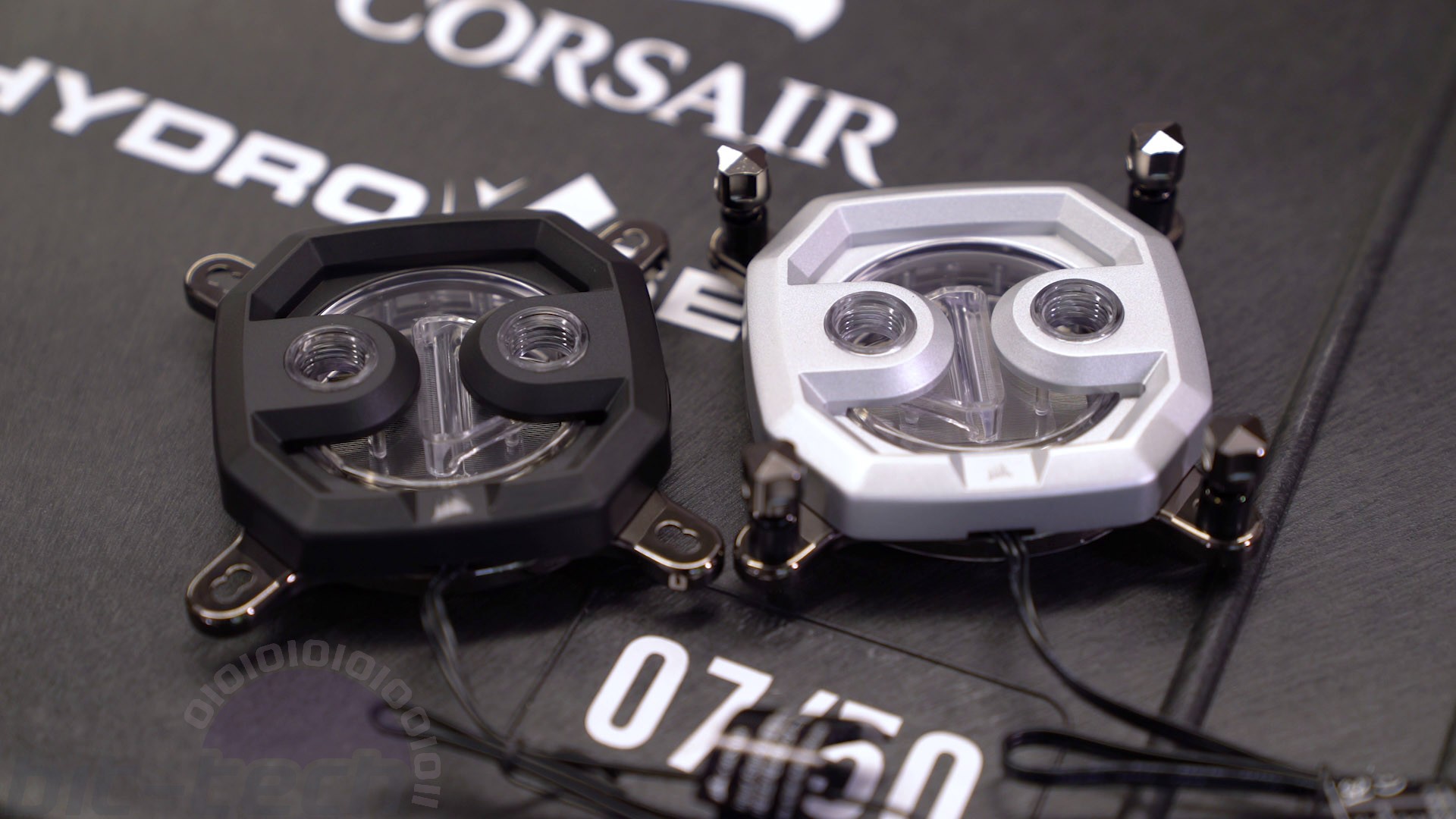
The theory here stands that these dense fin stacks should allow for a lot of available surface area and thus cooling potential. We'll be putting that to the test later of course once we've had a chance to build a proper system with all the bits and pieces. Lighting is of course one of the main selling points of Hydro X and the CPU blocks handle this via a ring of addressable LEDs hidden behind the front fascia. This connects to your lighting control (be it a Lighting Node Pro, Commander Pro, or other Hydro X part) via a pigtail connector. Now, compared with most blocks, having a wire come out isn't much of a big deal, but personally I did see this as a chance for Corsair to innovate by adding a socket instead; it could have been a really positive feature.
The clear portions are made from injection-moulded nylon, which as you'll no doubt see from the video is a bit of a bug bear of mine. Now since shooting that footage, I've had the chance to sit down and chat with Niko from Corsair's Hydro X Technical Engineering team and learned some new tidbits. On the lighting connector socket point it's something that Corsair is aware of and looking into for future products. In terms of the injection moulding, the materials were apparently chosen very carefully with longevity in mind, which I suppose should come as no surprise.
It was particularly interesting to hear that supposedly the chosen nylon grade is actually very expensive to produce and work with, in stark contrast to the usual reasoning behind injection moulding (low cost per part and massive production rate). It will definitely be interesting seeing how these parts play out in the long run, I think, especially in regards to things like coolant staining. One of the things that causes trouble with staining is simply complex geometry. Plasticisers and dyes can get caught in corners and seams, which is one of the reasons I'm always wary about moulded parts. Even if the material itself is very chemically resistant, sometimes the shape itself can simply be the enemy compared with machined parts, which tend to be simpler for ease of production.
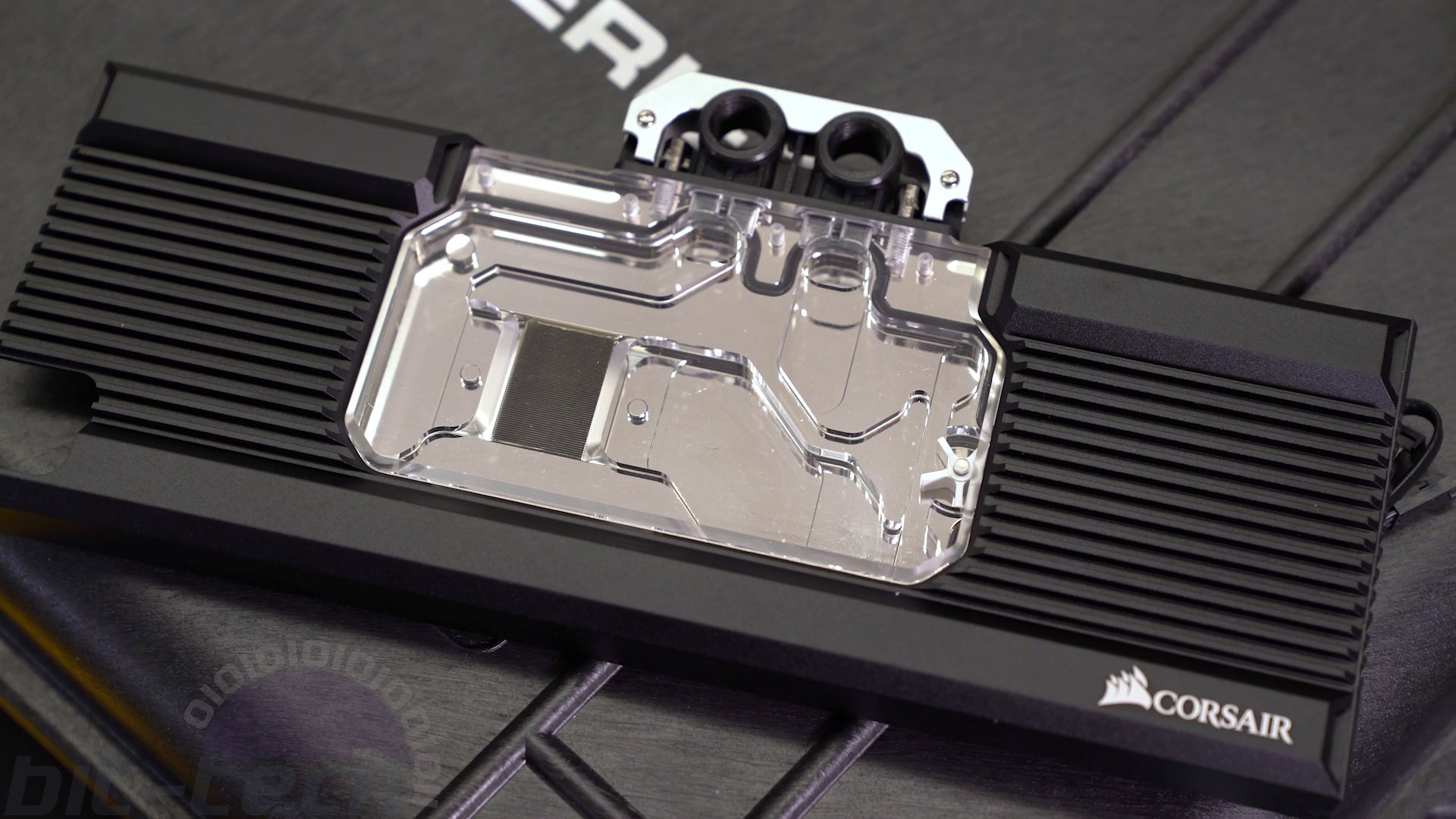
The XG7 RGB GPU blocks are rather different beasts. They're heavy, solid and, I think rather quite interesting. As with the CPU block, the LEDs are hidden behind a front fascia that prevents any glaring lights, and these blocks can also be daisy-chained easily, as they have both male and female connectors. Once again we're dealing with straggly wires for now, but who knows, that may change in the future, and again it's not a big deal since nobody else on the market is currently using a different method either. The acrylic machining on the samples we were sent was fantastic quite frankly; they were astoundingly clear, so kudos to the manufacturing teams on that one.
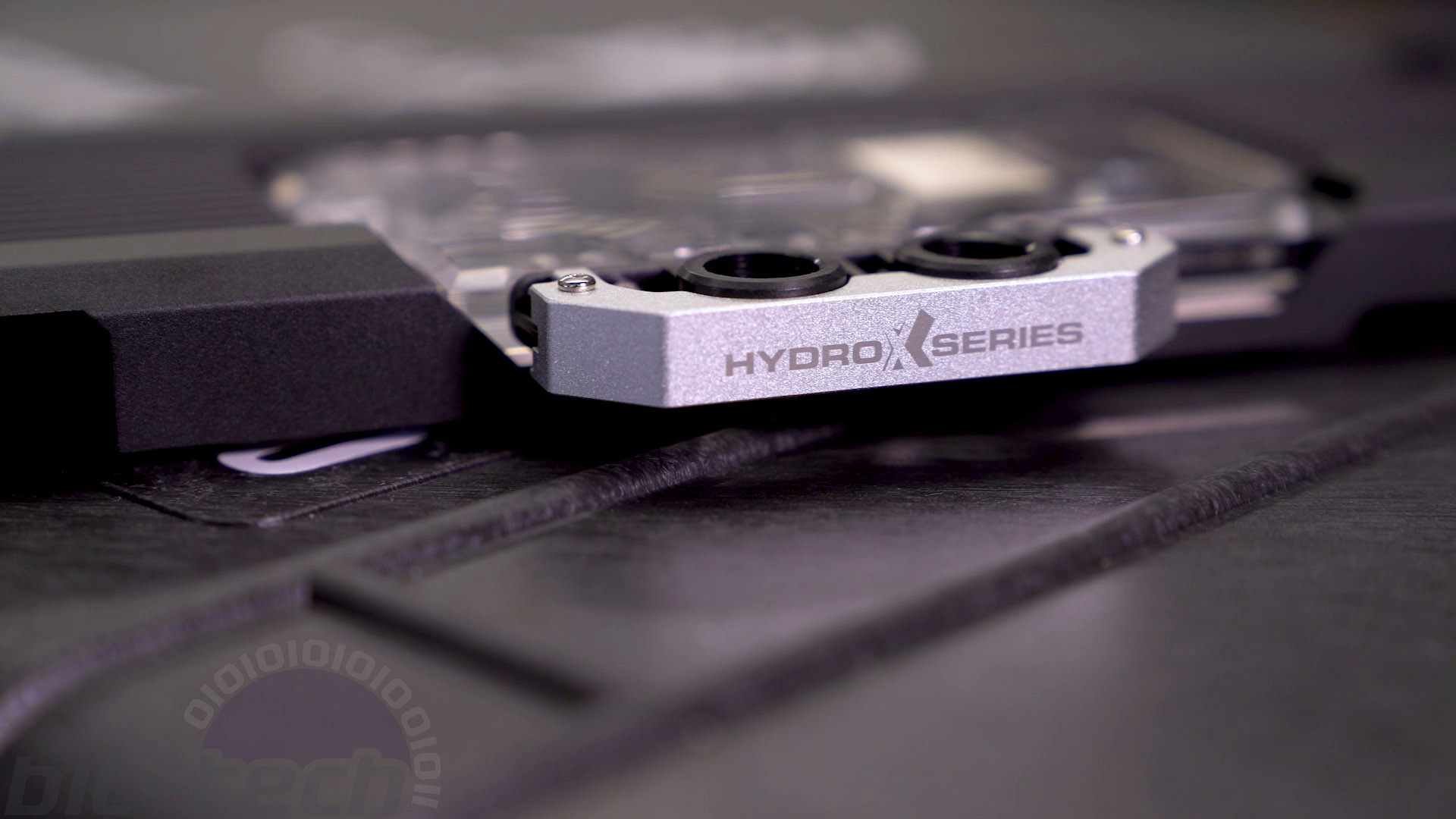
I also really like the terminal design, utilising the classic shape found on the Dominator Platinum memory heat-spreaders. GPU block terminals are often not given much focus, so I was happy to see some thought put in here. It's important, as it can be the one piece you actually see if a block is mounted traditionally in the PCIe slot. The blocks also come with backplates that feature a sleek, dark brushed finish. They may not be structural or offer cooling advantages, but it's a nice touch to include them in the package.
A stand-out feature is how these blocks are designed to be beginner-friendly. They come with thermal pads and paste pre-installed, so no fiddling around cutting strips to size and figuring out which thickness goes where, and the mounting screw sets are minimal and well labelled. This is great, as it's nerve-wracking enough simply taking apart an expensive GPU for the first time to begin with, never mind the added stress of worrying about installing the pieces necessary for the block to function correctly.
Lastly, of the main Corsair-developed parts we have the XD5 RGB Pump/Reservoir Combo unit. Like the other parts it has an addressable RGB LED lighting ring, this time found inside a collar on the top of the unit. The D5 pump is a genuine Xylem PWM unit, which is great to see. In the box you get brackets for mounting to 120mm and 140mm fan spaces, a bracket that attaches to the pump base, a temperature sensor, and a bridging plug for filling your loop. In terms of usability, this is fantastic; so many other manufacturers prefer to offer mounting accessories separately, which can be confusing for anybody, even experts.
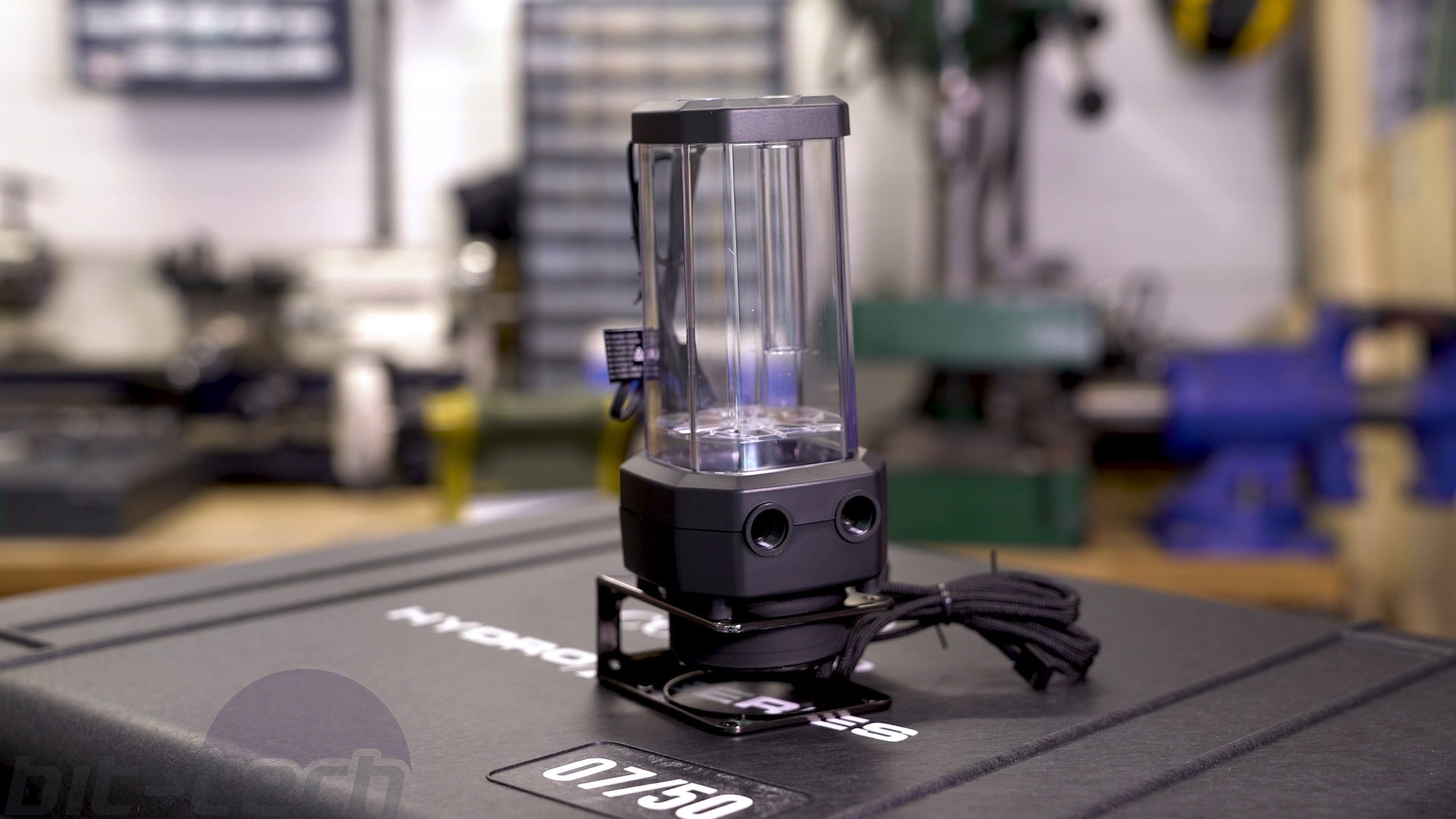
My main gripe again comes down to the construction; it's a fully injection-moulded piece. As before, a lot of this comes down to personal preference but I feel you simply lose some of that tactile feel, the weight and solidity, the confirmation that you've just purchased a fairly expensive piece of kit. Maybe that reasoning is just silly, but it's very much part of the experience for myself and many others. It's hard not to crack a smile when you pick up a tube a solid glass, clad in acetal and thick aluminium supports, or a monstrous slab of copper and brass; it just makes you go 'Phwoar!'. It's a shame that part is missing from this pump/res for me, but perhaps that's just me being cynical? (Who, you? - ed.)
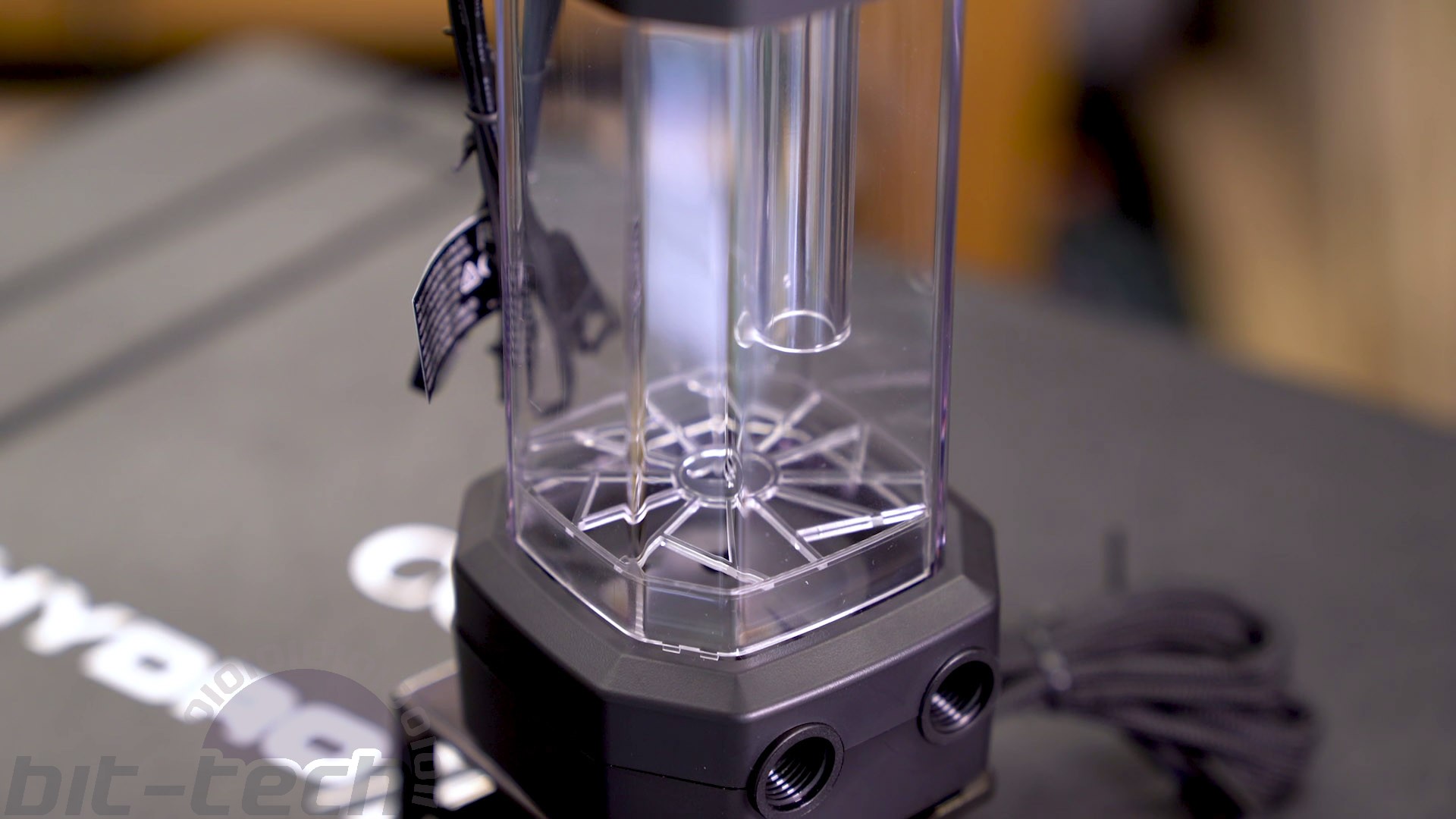
Then there's the lighting. Personally I would have loved to see this come from underneath the coolant itself rather than from the top. The pump wires will always be present, so to me it makes sense to try and have the LED wiring next to those for the sake of neatness. As it stands, you'll have to hide the top wire from view, which if you have the reservoir free-standing will mean running it down the back of the reservoir. Given that the whole structure is moulded anyway, I don't see why it wouldn't have been viable to have the LED ring either below the reservoir portion around the pump, or underneath the cover at the base, which serves no purpose other than to neaten the assembly. Speaking of which, I'm really not a fan of the huge seam that runs around the outside of the unit. In the promo material it's very neat and flush, but in the unit we unpacked it is very noticeable. That said, Niko made a point that Corsair is looking into the LED placement as well as other looks for future product revisions, so all this could change in the future.
The last pieces are the OEM parts such as the fittings, radiators, and coolant. We largely covered this in the Computex reveal, and frankly there's not a huge amount to be said. Corsair has chosen solid partners to work with here, and anybody who calls themselves a water-cooling enthusiast should be able to recognise the brands responsible: Bitspower on fittings, Hardware Labs for rads, and Mayhem's for coolant. Currently the ranges are fairly limited, but Niko said that Corsair is looking into expanding things potentially if the market looks like it will be receptive. Naturally, for now it's perfectly possible to mix and match to achieve the loop you want. Conveniently, since the fittings are actually made by Bitspower and aren't just clones, you can always supplement Corsair parts with adapters and specific fittings from Bitspower's enormous range, and finishes will match up exactly (a gripe with mixing different manufacturers, I find).
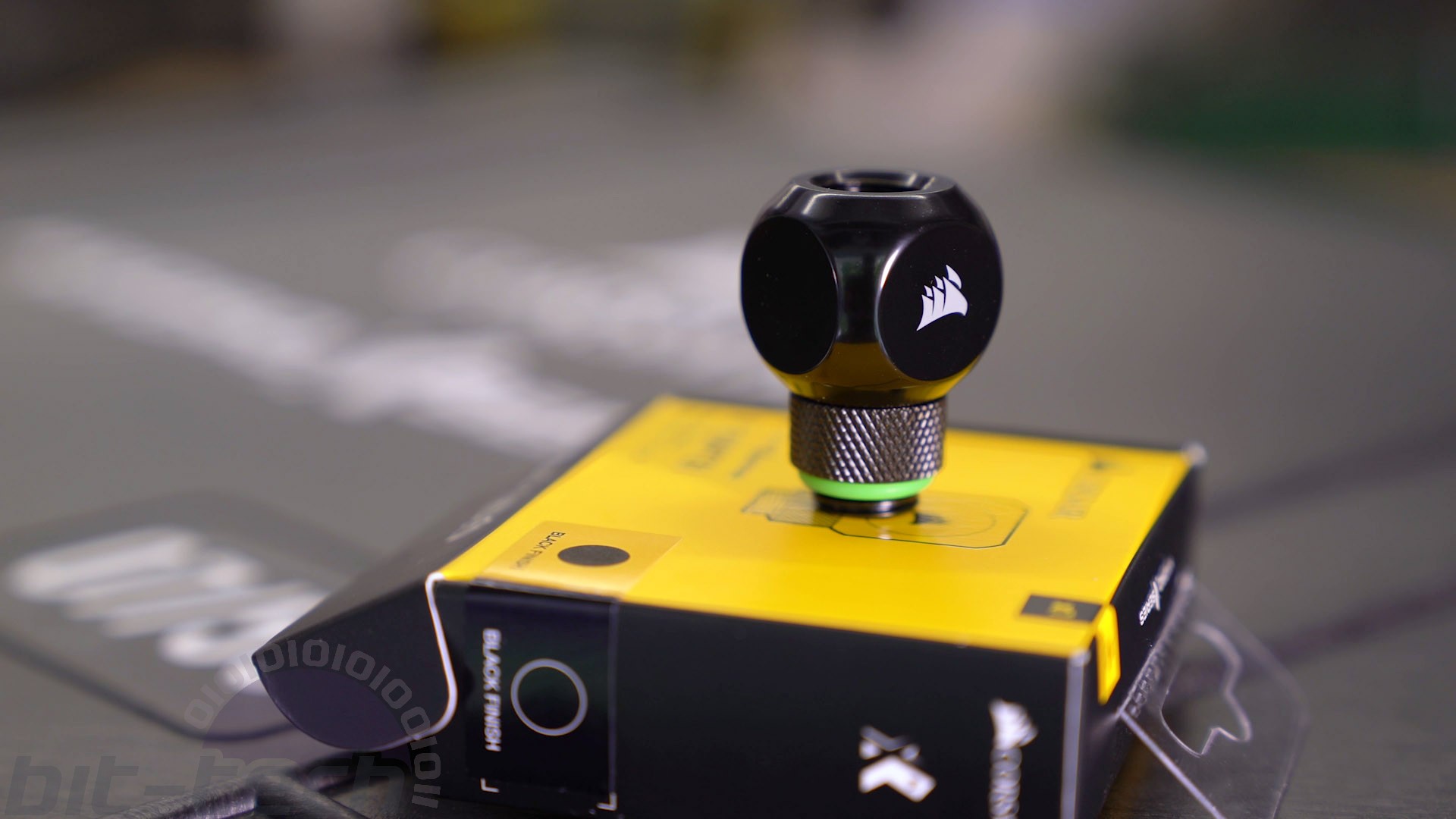
Interestingly, despite what the above image implies, Corsair opted not to add its branding to the vast majority of fittings. I think this is a bold move, and actually I really quite applaud Corsair for it. It can often be a bit much seeing Bitspower's dragon plastered absolutely everywhere throughout a build, especially if using white fittings where the branding can stand out an awful lot.
So in short, how could we summarise Hydro X? Well I think it could be quite a game-changer in the custom loop scene if Corsair plays its cards right. At present, I'm not sold on some of the parts, but that may change, and frankly if you have a whole Corsair ecosystem already it does make sense. Additionally, one of the biggest things that Corsair has at its disposal is a worldwide distribution infrastructure. Barrow and Bykski might have made water-cooling vastly more affordable than most Western brands are able to, but they are still hard to buy in most local markets.
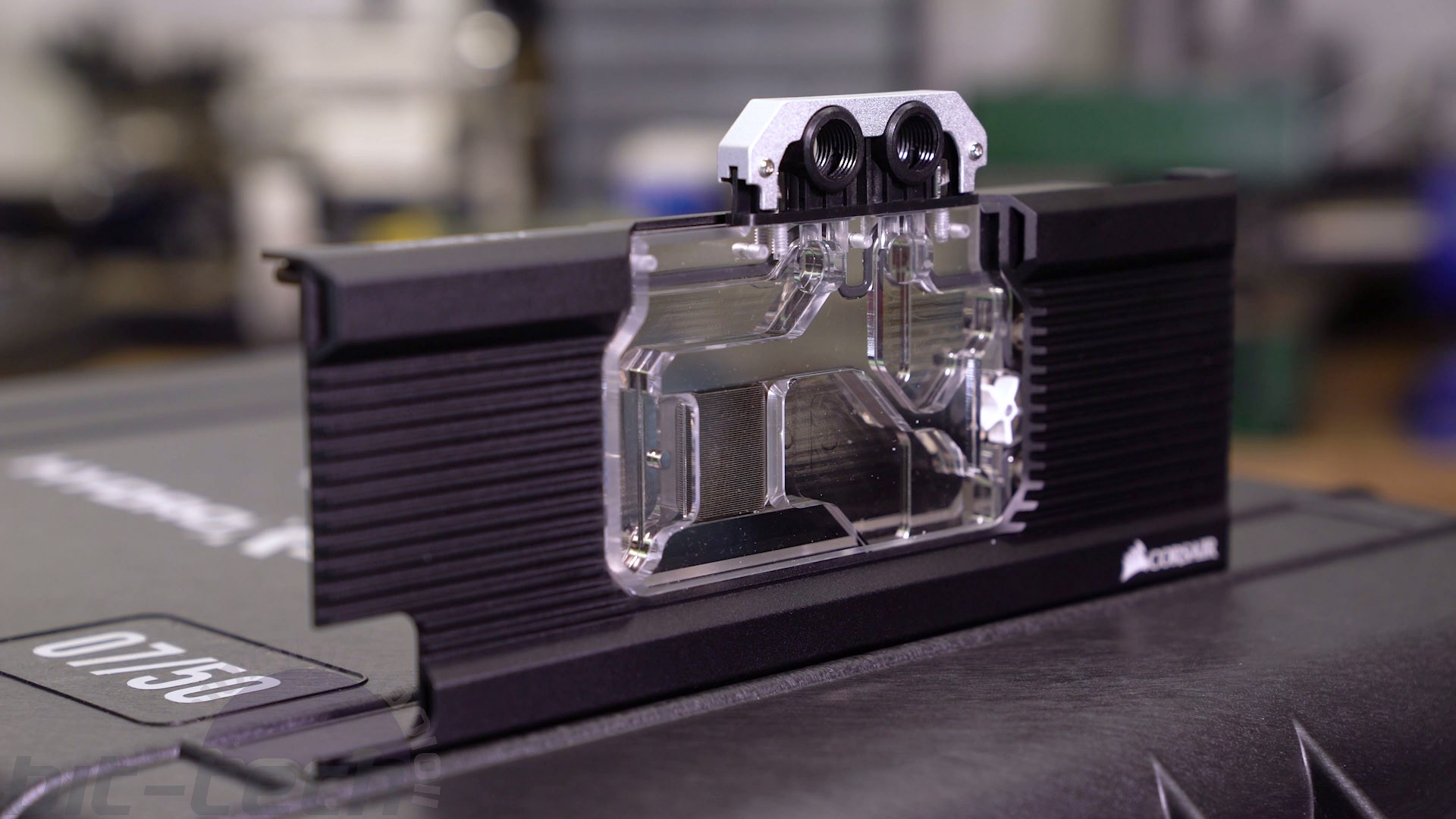
Oftentimes to benefit from the lower prices you have to order directly from Aliexpress or Taobao, which brings with it uncertainty and definitely a lack of communication. Corsair's approach is almost the opposite, offering pricing that's competitive with the current mainstream brands while streamlining the process of getting into the hobby. The Cooling Configurator (which we covered in the Computex article) is definitely going to be a big player here by helping beginners visualise layouts and guide them towards component choices.
Even if you don't intend to use the blocks and pump/res, having local access to Hardware Labs radiators, Mayhem's coolant, or Bitspower fittings (without logos, no less) could be pretty decisive. Then of course there's the potential for future developments. Niko made it quite clear that Corsair hasn't just stopped working on things, so it could be exciting to see what round two has in store. I for one would be very excited if Corsair took the daisy-chaining aspects and improved them further, perhaps even bringing them to its fans? It's not definite, but the potential is there. For now, though, stay tuned for our upcoming Hydro X build!

MSI MPG Velox 100R Chassis Review
October 14 2021 | 15:04

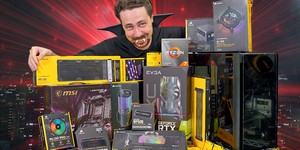
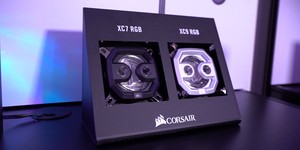




Want to comment? Please log in.